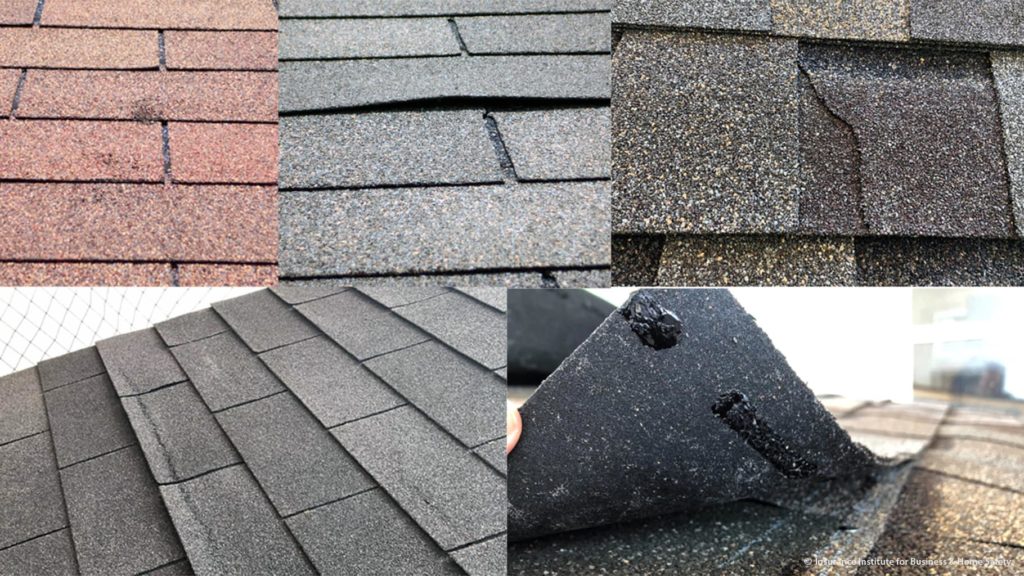Your roof should last many years, depending on the quality and methods of construction, and the materials used.
However, you can help prolong the life of your home’s roof by following these inspection and maintenance recommendations. Frequent visual inspections are important to watch for loose or missing roof covering (like shingles, tile or metal panel), but this type of informal, visual inspection provides just one part of the story. Consider consulting a roofing professional for the most accurate and thorough assessment of your roof’s condition.
1. Inspect and repair damage
There are several things you can look for that are signs of deterioration or aging, such as loose, broken, cracked, or missing shingles. Shingles that are buckling, curling, blistering, or worn down are also signs of deterioration. Be sure to look for wood rot or insect infestation and check any metal areas for rust. You should always consult a professional if your roof sustains damage from a severe storm, falling tree limbs, or other such hazards.
2. Trim trees
Remove tree branches that overhang your roof. This will prevent damage from tree limbs rubbing the roof in high winds and discourage mold growth in the heavily-shaded areas of your roof. Limbs that overhang a home can cause significant damage if they break and fall during a storm. Overhanging branches also clog and disrupt your gutter system as they shed leaves, pine cones and needles, fruit, blossoms, and other debris throughout the seasons.
3. Ensure gutters are secure
If you have gutters on your home, they serve an essential purpose to keep water not only off your roof, but away from your entire home. Some roofs have large overhangs and other features that do not require gutters, but for those of us with gutters, it is essential that we maintain them so they can continue to quickly and effectively collect and divert water. Gutters must remain clear of debris, but you should also watch for signs of a loose slip connector or end cap, deterioration of the gutter material, rotting of the fascia boards, or loose hangers and straps.
4. Remove debris from your roof
Remove dirt, loose objects, branches, and other plant material from your roof. Consider hiring a professional to perform this service.
5. Look for and repair loose or missing flashing
Check for and address any loose or missing pieces of flashing. Loose or ill-fitted flashing can cause roof cover failure and water intrusion during high-wind storms. Be sure to regularly inspect flashing for any issues before and after storms.
6. Inspect for and repair leaks
Once water finds a way in, it will continue to enter at that point. It is very important to spot and repair any leaks as soon as possible.
Look for these signs of a leaking roof:
- Leaks inside the attic
- Water stains on roof decking (around chimneys, vents, pipes, and valleys)
- Discolored roofing deck, rafters, or trusses
- Water stains on the ceiling
- Cracked or bubbled paint on a wall or ceiling
- Peeling or damp wallpaper
7. Inspect and seal roof penetrations
Check around chimneys, pipes, skylights, exhaust fans, and vents. Are penetrations well sealed and tight? Do you see gaps and/or signs of missing sealant?
8. Inspect and repair vents
Vents are essential to provide air flow and ventilation for your attic, but they must be installed correctly and checked frequently over the life of your roof to ensure they continue to work as designed.
For off-ridge vents:
- Do vents wiggle back and forth?
- Are they well attached?
- Are there screws attaching turbines or caps?
For ridge vents:
- Are vents tightly screwed down?
- If nails are used, they should be fully nailed down.
9. Promptly remove snow and ice
The buildup of snow and ice over a long-duration winter storm or sustained period of cold weather can cause moisture to seep below roof shingles and inside roof penetration points as the snow or ice begins to thaw. The extra weight of heavy snow and ice can also be a problem for specific types of roofs, especially in areas where this type of weather is not normal.
Long-handled tools and other products are available to help homeowners remove large quantities of snow and ice, but always keep safety in mind and contact a service professional to help assess the amount of buildup on your roof and to recommend the best course of action for clean-up and prevention.
Follow these steps to protect your roof and help it last longer, serving as the first line of defense for your home against rain, wind, hail, and all types of weather hazards.
Read more of our tips and ideas in the Homeowner Resources section.
Stay In The Know
Do you want to keep up with the latest resiliency research? Would you like timely tips and reminders to keep your home safe from Mother Nature? Are you interested in the science behind the FORTIFIED standard? Then sign up for the FORTIFIED Update, today!

